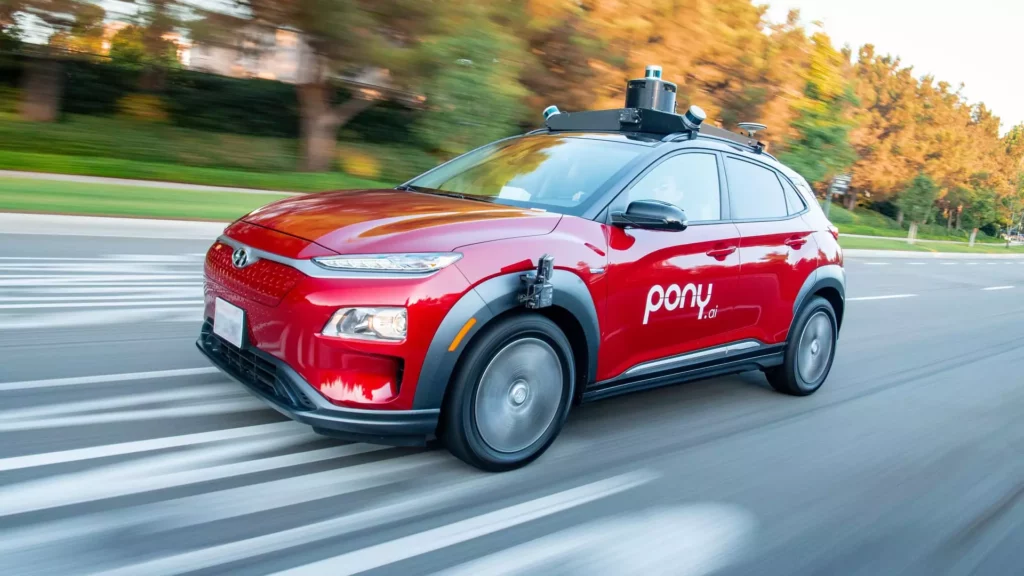The union of Pony.ai and Tencent Cloud is a compelling chapter in the evolving narrative of autonomous transportation. This partnership is not merely a chance encounter; it represents a strategic convergence of complementary strengths—Pony.ai’s cutting-edge advancements in robotics and Tencent’s vast technological infrastructure. The duo is poised to bring forth an era where autonomous vehicles, particularly robotaxis, become integral to our urban landscapes. As we delve deeper into this collaboration, it becomes clear that they are not just reacting to trends but are actively shaping the future of personal and shared mobility.
The WeChat Advantage
At the center of this groundbreaking initiative lies Tencent’s WeChat, a platform with over a billion monthly active users. The sheer scale of this user base can hardly be overstated. Integrating Pony.ai’s autonomous vehicle services into WeChat holds transformative potential—users will soon be able to hail a ride without transitioning to another app. This seamless integration eliminates friction, enhancing the overall user experience. Instead of grappling with conventional taxi services or ridesharing companies, individuals will have access to driverless rides with just a few taps on their trusted app—a paradigmatic shift that could disrupt established mobility models.
Imagine the convenience of orchestrating all facets of life, from messaging to transportation, through a single platform. This is not just a service upgrade; it’s a bold reimagining of how we interact with our daily transportation needs. The implications could result in unprecedented adoption rates for autonomous vehicles, especially among tech-savvy urban residents who value efficiency and ease.
Ambitious Aims for Autonomous Driving
Both Pony.ai and Tencent Cloud are setting their sights on lofty goals. With aspirations to achieve Level 4 (L4) autonomy, where vehicles operate sans human input in designated scenarios, the ambition reflects an understanding that public acceptance hinges on perceived reliability and safety. Yet, this is not without complexity. Developing L4 technologies requires a relentless pursuit of innovation and investment, and the timeline to mass adoption remains uncertain. Still, both companies are preparing for accelerated testing and deployment—an acknowledgment of the pressing demand for innovative transportation solutions.
Pony.ai’s recent unveiling of its seventh-generation robotaxi at the Shanghai Auto Show signals its commitment to lead rather than follow in this fast-evolving domain. However, exuberance must be tempered with realism; as promising as these advancements may seem, the company also faces significant regulatory environments that could slow its progress.
Navigating Risks in a Global Landscape
The road ahead is fraught with geopolitical jeopardy, especially regarding Pony.ai’s efforts to expand into the U.S. market. The potential for rising tensions and shifting regulations is a harrowing specter that looms over ambitious tech firms. Pony.ai’s contemplation of a secondary listing outside the U.S.—without abandoning homegrown aspirations—highlights the difficulties inherent in navigating a complex international landscape. In a world where technology is tightly intertwined with political dynamics, the risks are palpable.
James Peng, CEO of Pony.ai, has openly acknowledged the tightrope they must walk: driving innovation while contending with intensifying scrutiny from both regulators and competitors. The challenge lies in balancing aggressive expansion plans with the need to comply with a rapidly evolving regulatory framework. In this context, Pony.ai’s actions reflect a thoughtful approach that recognizes the manifold layers of risk involved.
Evolving Urban Mobility: From Concept to Reality
The partnership’s potential to redefine urban mobility cannot be exaggerated. By marrying Tencent’s communications dominance with Pony.ai’s technological ingenuity, the entire paradigm of transportation is on the brink of a seismic shift. As cities grapple with increasing congestion and sustainability concerns, the use of autonomous vehicles positioned within users’ everyday frameworks becomes a viable solution.
Pony.ai’s narrative is not one of simple growth; it’s a concerted effort to reshape the urban landscape itself. The strategic partnership opens avenues for shared mobility services that could help alleviate pressures on cities while offering consumers innovative options for getting around. As these technologies mature, we stand at a revolutionary juncture where how we view commuting will evolve fundamentally.
Therefore, as this collaboration unfurls, it serves as a bellwether for the autonomous vehicle market. Observers cannot help but be enthralled by the potential of Pony.ai and Tencent to transform urban mobility—the very essence of how we navigate and experience our cities. While challenges remain, the possibilities they unlock are nothing short of exhilarating.









Leave a Reply